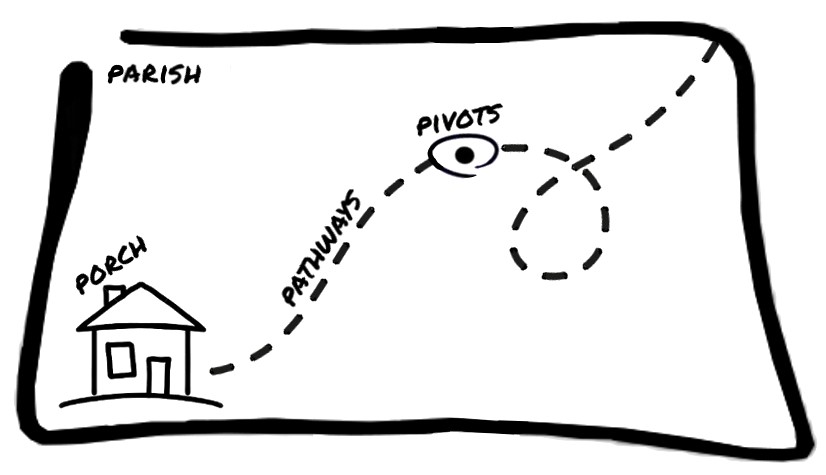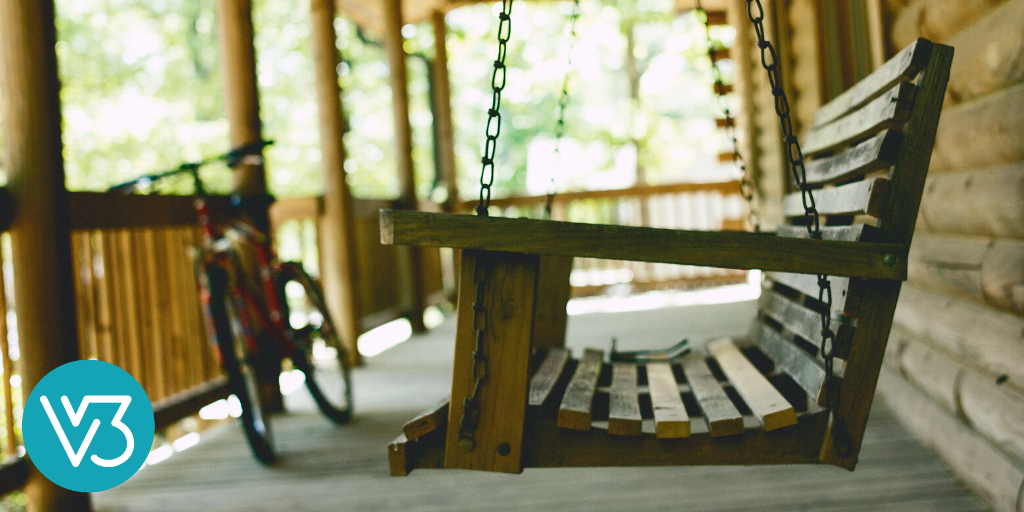There is a haunting scene at the end of the apocalyptic disaster film Deep Impact (1998). After the water recedes from mega-tsunamis caused by a comet crashing into earth, civilians wander back into the streets with trepidation, grogginess, uncertainty and yet some hopefulness for rebuilding the world. I resonate with this image. How do we reengage our world after being in hiding, afraid of the outside elements for so long?
We Are Bodied Beings
Is there a lingering impact for being huddled away? For as much as Zoom and social media have allowed us to stay somewhat connected, nothing can replace what our bodies long for—Place. Our senses, our touch, our eyesight, our footprints, and our abode-making can only be meaningfully felt in one place at a time. A thousand text messages cannot replace the phenomenon of interpersonal presence—our physiology attests to this.
There are measurable differences neurologically between being comforted online vs. being comforted in-person, having a conversation online vs. having a conversation in person, hearing a story online vs. hearing a story in person. Technology is not bad, but it cannot nourish us the way we need to be nourished and can even increase loneliness, anxiety, a loss of empathy, and even depression. We are bodied beings and our bodies know it.
Technology is not bad, but it cannot nourish us the way we need to be nourished and can even increase loneliness, anxiety, a loss of empathy, and even depression. We are bodied beings and our bodies know it. ~ Dan White Jr. Click To TweetHabits of Detachment
It has been quite easy in quarantine to build habits of detachment, no guilt, it was out of our control. For many, maintaining strong contact with their neighborhood has been difficult or near impossible during the pandemic. We all are traumatized to various degrees by being severed from place-based contact. This is called The Displacement Effect. The Displacement Effect, pioneered by Otto Fenichel, is the ensuing influence that extended seasons of detachment has on the function of emotional and relational attachment to a place and people.[1]
What happens when people are suspended in a detached situation because of the conditions of violence and war, economic instability or natural disasters? It creates a psychological state that makes connecting with a Place feel anxious, unfamiliar, unstable, frightening, or even threatening. What felt comfortable now feels conflicted. I know that I am feeling this, and I haven’t even left my front door yet.
Exposure Therapy in Place
How do we re-enter the world, our local-worlds? I think we need some exposure therapy which involves exposing ourselves slowly to the anxiety source without the intention of causing harm. In many ways, being exposed again to our Place is being exposed to God. The local space is where all things come to collide, where God’s presence is already tied to the neighborhood, the streets connecting us to each other, the homes we eat in, and the parks that we play in.[2]
Anyone that has learned to deeply love their neighborhood knows that idealism must come crashing down as we encounter the realism of both beauty and brokenness intermingled in the same crock-pot of life. How do we reenter the current of our neighborhoods? God is inviting us to behold the weight of our neighbors’ glory as C.S. Lewis has so eloquently stated. We must be compelled as those curious, listening for stories, tending to the pains in our places. Our first orientation should be to look, listen, and learn where healing is needed.
Anyone that has learned to deeply love their neighborhood knows that idealism must come crashing down as we encounter the realism of both beauty and brokenness intermingled in the same crock-pot of life. ~ Dan White Jr. Click To TweetFour Place-Connectors
What follows is a simple schema for attaching to a neighborhood. These sorts of things help me, as I can be quite abstract in my desires rather than concrete. I want to rekindle habitual patterns that draw me towards the “other.” This is where we face incremental steps of exposure. Exposure is difficult work that causes us to feel things that we have worked hard to avoid. So, I encourage you to gather with a few local friends to consider, support, and mutually nudge each other into the social labyrinth of your neighborhood.

PARISH – From Indifference to Partnership
A Parish is a manageable section of your city where you can commit to its flourishing. We are limited in our sense of environment. We can only emotionally attach and have affection with a place that has a certain scope and size. Begin by seeking out who is already doing significant work in your Parish, no matter the creed and color. Learn to serve and form solidarity with them. In time, the joys and pains of this place must become your joys and pains.
- What beauty has transpired, during COVID-19, in your Parish?
- What brokenness has increased during COVID-19?
- How have the marginalized, the poor, the strangers been affected?
- How have those who held power/prestige in your Parish been impacted?
- How can you come-along-side your Parish at this moment?
PORCH – From Independence to Interdependence
The Porch is a symbol of our literal residence. A typical home is a realm of personal privacy insulated from the public world and maybe even more so because of the pandemic. How can we use the front stoop, the lawn chair, the BBQ, the sidewalks, and the front lawn for connecting again? Inviting the “other” into our home is inviting Jesus into our home. What creative ways can we extend peace to our neighbors?
- How can we move from protective-security back to sacred-hospitality?
- What questions of pain and possibility are you asking your neighbors?
- How can we slowly begin to establish a common table?
- What are your fears associated with home generosity?
- How can you break open space for neighbors to see each other again?
PATHWAYS – From Repelling Interaction to Impelling Interaction
Pathways are the regular routes we take. God’s dwelling is tied to the streets connecting us to each other. We easily become isolated from the places that we meander through, withdrawing into minimal interactions. How do we transition from unconscious busyness to conscious habitation? The pathways we take shape our availability to where God is present.
- What roads and routes do we want to take to encounter those in our neighborhood?
- Do we walk? Do we drive? Do we bike?
- Are we open to stopping along the path? Who is regularly along the path?
- Are we consistent in our pathways?
- How do we move toward attentive listening along our pathways?
PIVOTS – From Consuming Perks to Beholding People
Pivots are those places we park. They are the spots where different sorts of people can mingle. They are where relational intersections occur. When you pivot, there are people within arm’s reach. Most of these places (coffee shops, YMCA’s, libraries, etc.) have been off limits during COVID-19. We will be anxious about them. How do you become a “face in the place” again? We are tasked with building bridges that travel beyond suspicion into the realm of trust.
- Where are you a regular? How often do you go there?
- Have you made introductions?
- Who is there? Do you know their stories? Have you asked?
- Where do you see God at work in that location?
- What anxieties are inhibiting your presence?
Join a Fall 2020 Learning Cohort

[1] Feldman, Settlement Identity Crisis , 78-79.
[2] Hartgrove, The Wisdom of Stability, 32-34.
Share this Post
